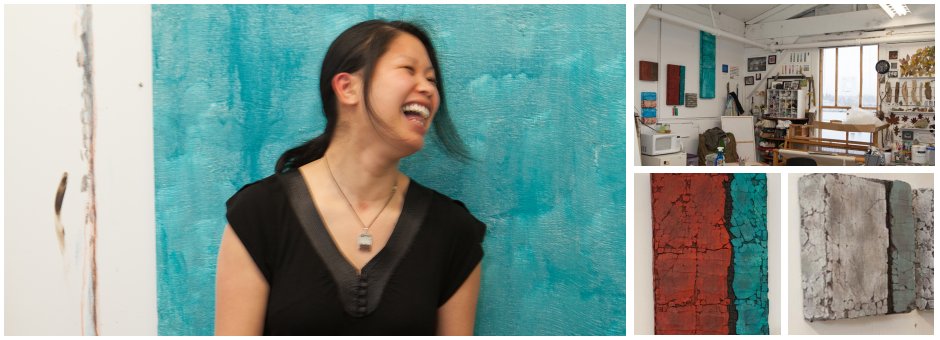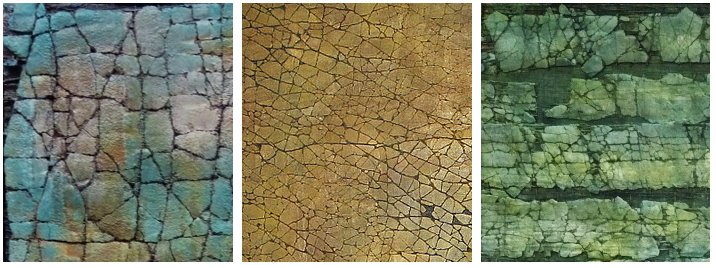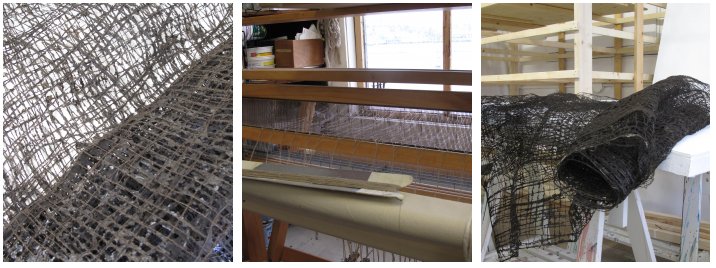
It was a typical rainy Vancouver morning when we met artist Karen Bagayawa at her studio at 1000 Parker Street. We were greeted with enthusiasm that quickly warded off any signs of our city’s not-so-sunny weather. At the time we met her, she had just sent off most of her works to a local exhibit. But it only took a glance to get a good sense of her inspirations and the type of art that she does.
Inside her studio at the far end next to the window, a set of carefully displayed objects taken from nature sat row on row. There were leaves, branches, and even an architecturally interesting interior of cacti; in front of the museum-like display stood a loom that she works on for most of her pieces. We asked her about the artifacts and she excitedly brought out a rock collection that included everything from jagged minerals to smooth, opalescent egg-like rocks.

Fortunately, a few pieces of art work still remained in the studio. We had the chance to experience her art in person, and it didn’t take much to draw us into it. Karen’s love for texture, colour, and fabric started when she was a child. She used to be mesmerized by her mother’s sewing, and loved touching the fabrics her mother used. Cracked formations in perfectly imperfect geometry are Karen’s signature style; the first thing you want to do is reach out and touch it. The uneven surface shows there’s a definite tactile component to her art. Like her nature-inspired palette, there is something very organic in her works. In recent years, she’s used more neutral colour palettes, and the cracked surfaces resemble rock formations, lizard scales, honeycombs, and anything else that comes to the imagination.
The core of her art centres on an elaborate process, requiring many steps. One of the first involves weaving grid-like patterns through her loom, and the wider the spacing, the wider the cracks become. She also noted that her fabric of choice is linen, a more fibrous material that absorbs pigment. The beautiful hazelnut brown weave we saw was reminiscent of a loosely woven summer sweater. A following step involves a material atypical to an artist’s supplies: grout. Karen applies layers of the building material onto the woven grid. When dried, she takes the pieces and cracks it, and to get the exact look she’s after, she deliberately chisels off pieces. These are just some steps of her highly ritualistic process, each of which brings an emotional experience to her.

Feeling strong emotions is exactly what she wants her viewer to walk away. “If the viewer can walk away with an emotional experience that makes me happy in what I do,” said Karen. She knew from the start that she wanted to focus on colour and texture in her practice, as opposed to many of her classmates who worked with political messages.
As a result, her university professor suggested she work with spices. The professor told her that her goal should allow the viewer to literally “taste” the colour. We really love what she’s done with raw, emotional colours from her earlier works, such as bright blues and fiery reds, to her later nature-inspired colour palettes. It’s apparent that her artwork is about connecting to the viewer, and perhaps connecting them to nature as well.
Karen Bagayawa currently works with a contractor to plan working her art directly on the walls of homes. We look forward to seeing and experiencing a life-sized emotional piece of artwork. Karen’s artwork is represented at the Craig Yeats Studio and Gallery in West Vancouver, and Art Junction Art Gallery & Frame Studio in Whistler, British Columbia. Be sure to visit her studio at this year’s East Side Culture Crawl to experience Karen’s artwork first hand.
Add a comment
0 Comments